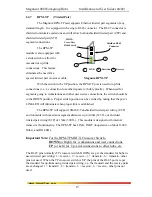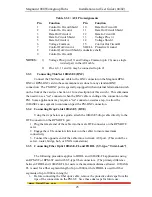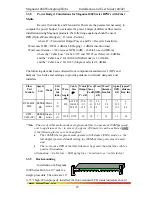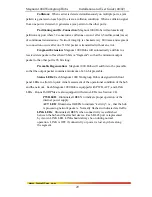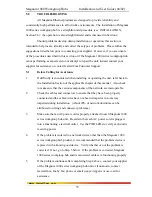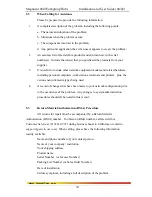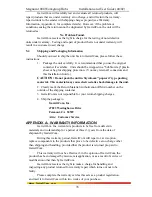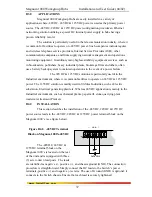
Magnum 1000 Workgroup Hubs Installation and User Guide (04/02)
29
www GarrettCom com
.
.
Collisions:
When carrier is detected simultaneously on multiple ports, a jam
pattern is generated on each port to create a collision condition. When a collision signal
from one port is detected, it generates a jam pattern to the other ports.
Partitioning and Re-Connection:
Magnum 1000 Hubs will automatically
partition any port where 32 consecutive collisions occur or after 6.5 milliseconds (msec)
of continuous transmissions. Network integrity is checked every 800 msec and segment
re-connection occurs after one 512-bit packet is transmitted without an error.
Fragment Extension:
Magnum 1000 Hubs will automatically add bits to a
received data packet of less than 96 bits (a "fragment") so that the minimum output
packet to the other port is 96 bits long.
Preamble Regeneration:
Magnum 1000 Hubs will add bits to the preamble
so that the output packet contains a minimum of a 64-bit preamble.
Status LEDs:
Each Magnum 1000 Workgroup Hub is designed with front
panel LEDs to allow for quick visual assessment of the operational condition of the hub
and the network. Each Magnum 1000 Hub is equipped with PWR, ACT, and LINK
LEDs. Bonus Port RPMs are also equipped with status LEDs (see Section 2.4).
PWR LED
: Illuminates GREEN to indicate proper operation of the
internal power supply.
ACT LED
: Illuminates GREEN to indicate “activity”, i.e., that the hub
is processing network packets. Normally flashes to indicate data traffic.
LINK LEDs
: Illuminates GREEN when connectivity is established
between the hub and the attached device. Each RJ-45 port is represented
by its own LINK LED. LINK should always be on during normal
operation. LINK is OFF if connectivity or power is lost anywhere along
the segment.

